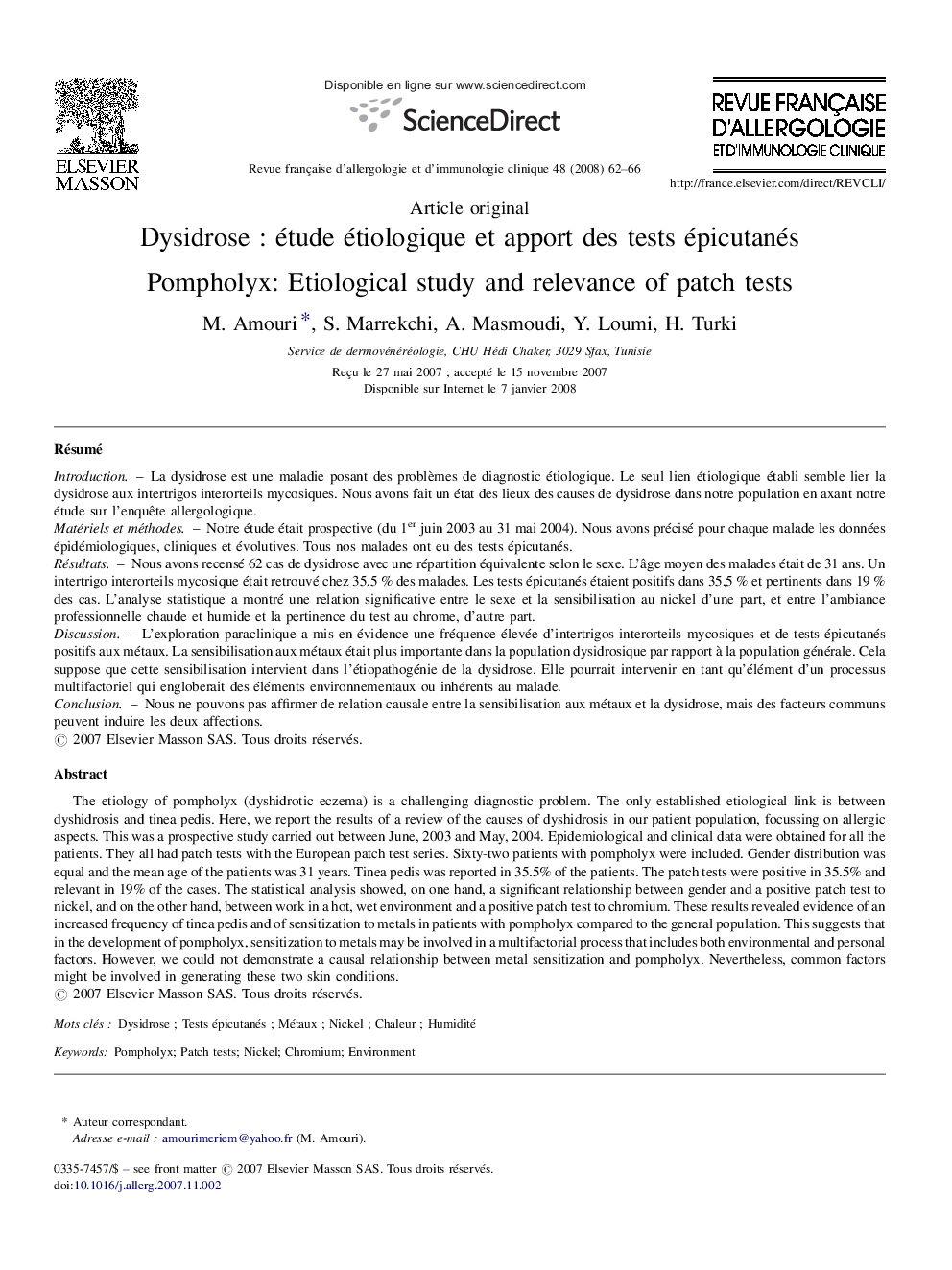| Article ID | Journal | Published Year | Pages | File Type |
|---|---|---|---|---|
| 2770137 | Revue Française d'Allergologie et d'Immunologie Clinique | 2008 | 5 Pages |
Abstract
The etiology of pompholyx (dyshidrotic eczema) is a challenging diagnostic problem. The only established etiological link is between dyshidrosis and tinea pedis. Here, we report the results of a review of the causes of dyshidrosis in our patient population, focussing on allergic aspects. This was a prospective study carried out between June, 2003 and May, 2004. Epidemiological and clinical data were obtained for all the patients. They all had patch tests with the European patch test series. Sixty-two patients with pompholyx were included. Gender distribution was equal and the mean age of the patients was 31 years. Tinea pedis was reported in 35.5% of the patients. The patch tests were positive in 35.5% and relevant in 19% of the cases. The statistical analysis showed, on one hand, a significant relationship between gender and a positive patch test to nickel, and on the other hand, between work in a hot, wet environment and a positive patch test to chromium. These results revealed evidence of an increased frequency of tinea pedis and of sensitization to metals in patients with pompholyx compared to the general population. This suggests that in the development of pompholyx, sensitization to metals may be involved in a multifactorial process that includes both environmental and personal factors. However, we could not demonstrate a causal relationship between metal sensitization and pompholyx. Nevertheless, common factors might be involved in generating these two skin conditions.
Related Topics
Health Sciences
Medicine and Dentistry
Anesthesiology and Pain Medicine
Authors
M. Amouri, S. Marrekchi, A. Masmoudi, Y. Loumi, H. Turki,
